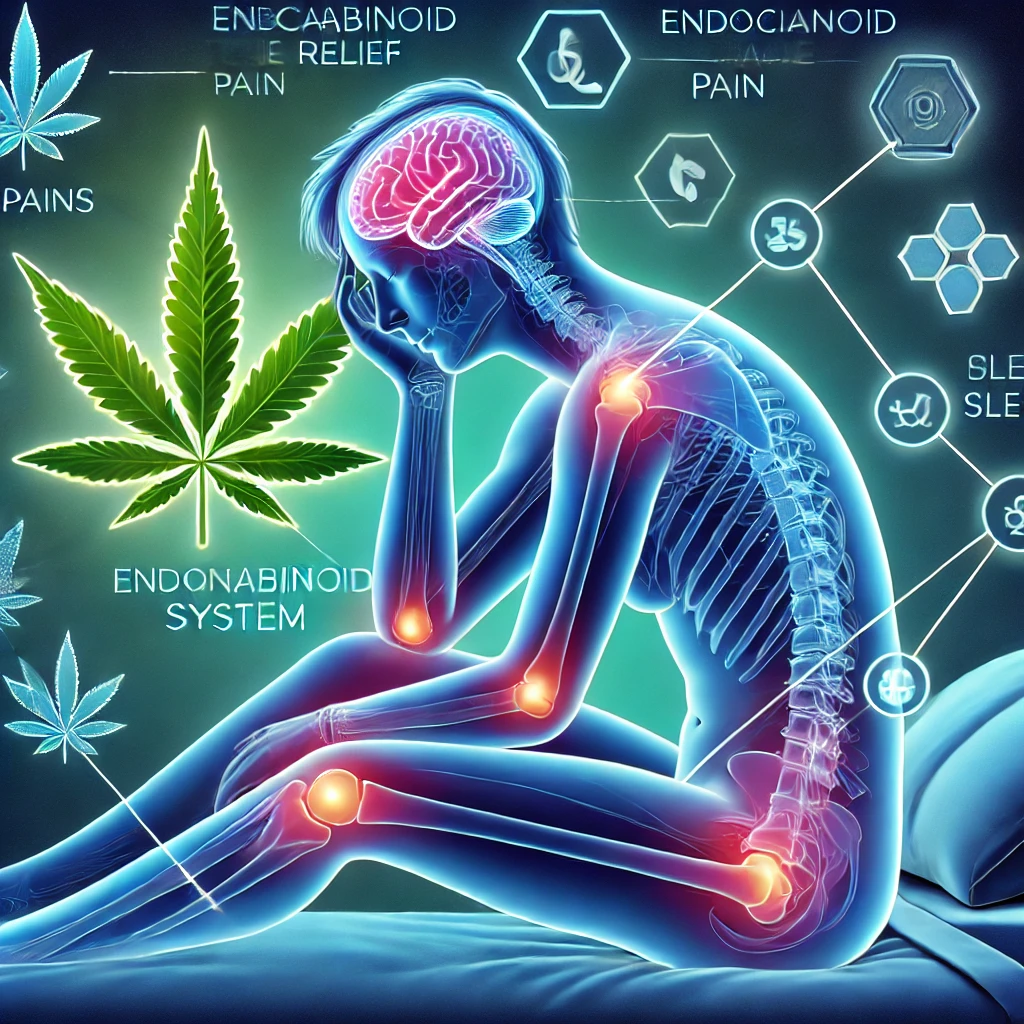Cannabis And Pain
How Cannabinoids May Improve Pain-Related Sleep Disorders
Cannabinoids, the active compounds found in cannabis, have shown promising potential in managing sleep disorders associated with chronic pain. Chronic pain can significantly disrupt sleep patterns, leading to conditions such as insomnia, restless sleep, or frequent nighttime awakenings. Traditional medications often come with their own set of challenges, such as dependency and side effects, which is why many are turning to cannabinoids as an alternative.

How Cannabinoids Work
Cannabinoids interact with the endocannabinoid system (ECS) in our bodies, which plays a key role in regulating various physiological processes, including pain perception and sleep. Two primary cannabinoids, THC (tetrahydrocannabinol) and CBD (cannabidiol), are of particular interest.
– THC:
Known for its psychoactive effects, THC can help reduce pain and induce sleep by binding to cannabinoid receptors in the brain. However, its psychoactive nature can also lead to side effects such as grogginess or dizziness the next morning.
– CBD:
Unlike THC, CBD is non-psychoactive and has anti-inflammatory and analgesic properties. It promotes relaxation and reduces anxiety, which can improve sleep quality without the “high” associated with THC.
Methods of Administration
There are various methods of administering cannabinoids, each with its own onset time and duration of effects:
– Sublingual Oils:
Administered under the tongue, sublingual oils are absorbed directly into the bloodstream, providing quick relief. This method is ideal for those who need fast-acting relief from pain and sleep disturbances. However, the taste can be off-putting for some users.
– Edibles:
Edibles, such as gummies or baked goods infused with cannabinoids, offer a longer-lasting effect. They take longer to kick in—typically 30 minutes to 2 hours—but the effects can last up to 8 hours. This makes edibles a good option for those who suffer from pain throughout the night. A downside is the risk of overconsumption, as it can be difficult to gauge the appropriate dosage.
Real-Life Example
Consider Jane, a 45-year-old woman who suffers from rheumatoid arthritis. Jane’s chronic pain often keeps her awake at night, leading to fatigue and decreased productivity during the day. After trying several medications with limited success, Jane decides to explore cannabinoids. She starts with CBD sublingual oil, taking a few drops before bed. Within a week, she notices a significant improvement in her sleep quality. On nights when her pain is particularly intense, she opts for a THC-infused edible, which helps her sleep through the night without waking up.
Potential Side Effects
While cannabinoids can be effective in managing pain-related sleep disorders, they are not without side effects:
– Grogginess:
Especially with THC, users may experience grogginess the following morning, which can affect daily activities.
– Dependency:
There’s a risk of developing a dependency on cannabinoids, particularly THC, if used excessively.
– Dry Mouth and Increased Appetite:
Common side effects include dry mouth (cottonmouth) and an increased appetite, often referred to as “the munchies.”
Conclusion
Cannabinoids offer a promising alternative for those struggling with pain-related sleep disorders. By carefully selecting the method of administration and being mindful of the dosage, users can find relief from their symptoms with minimal side effects. As with any treatment, it’s important to consult with a healthcare provider to determine the best approach for individual needs. Cannabinoid-based treatments have recently garnered attention as potential remedies for managing dental pain, particularly after dental procedures such as extractions, root canals, or gum surgery. These compounds, primarily derived from the Cannabis plant, offer an alternative to traditional pain management methods, with promising results. In this article, we will explore how cannabinoids might provide relief, focusing on two common methods of application: topical use and oral ingestion. We will also discuss possible side effects, including dry mouth and dizziness, while illustrating their application through real-life examples.